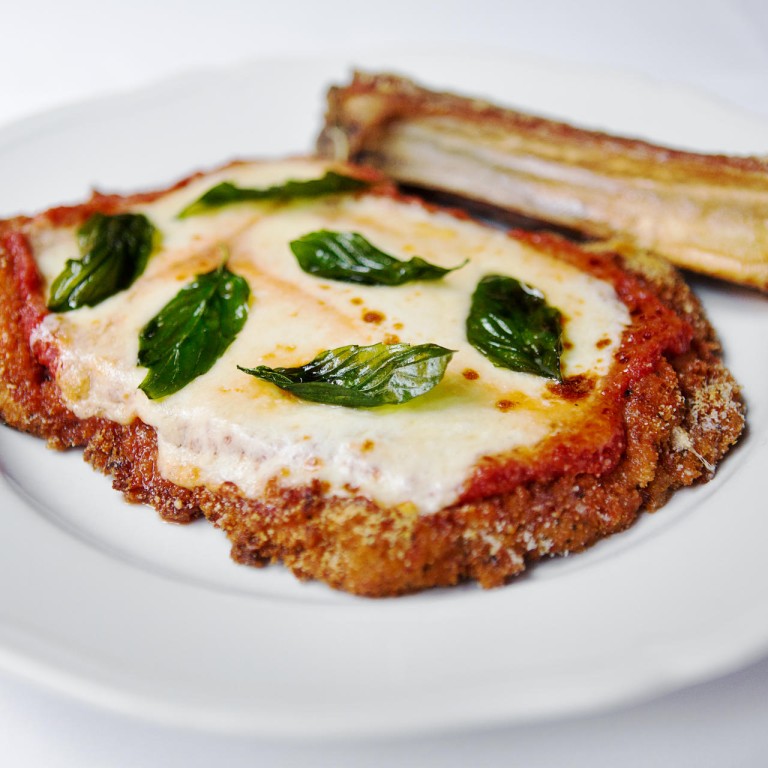
Carbone brings the hearty red-sauce dishes of Italian-American cuisine to Hong Kong
Carbone brings the hearty red-sauce dishes of Italian-American cuisine to the city, writes Charley Lanyon
Carbone, New York City's Greenwich Village red-sauce staple, has kept diners and critics buzzing since it opened last year.
The concept from chefs Mario Carbone and Rich Torrisi - former lieutenants of Daniel Boulud and Mario Batali - of revisiting and refining the glory days of Italian-American cuisine has garnered attention for its over-the-top theatrical style and earned breathless reviews in magazine and .
Both publications mentioned celebrity diners and a bacchanalian dedication to (over) indulgence, complete with monster portions and sagging dessert carts.
Now the madness is coming to Hong Kong. Carbone represents a partnership between Black Sheep Hong Kong and New York's Major Food Group, and will replace Bisous in the LKF Tower.
Much of the menu doesn’t even exist in Italy. But it is still recognisable as Italian food
Speaking to Mario Carbone and his business partner Jeff Zalaznick on the phone in New York, I ask if they are worried that Hong Kong diners wouldn't know what to make of this self-referential, unabashedly American concept.
Carbone says he isn't concerned. Sophisticated diners are used to understanding Italian food as being a collection of regional cuisines, and red-sauce Italian is no different; it just comes from New York instead of Tuscany or Amalfi.
Red-sauce Italian is a term for Italian-American cooking. It used to be considered derogatory, intended to distinguish it from regional Italian cuisines. It is defined by its generous use of tomato sauce, melted mozzarella and a zeal for all things fried.

"Much of the menu at Carbone doesn't even exist in Italy. But it is still recognisable as Italian food through the proliferation of Italian-Americans," Carbone says. "Baked clams, veal parmesan, and Caesar salad don't exist in Italy, but they're all important in an Italian restaurant."
Aside from the old-school American recipes, the Carbone team will also be bringing traditional American service, something that is even dying out in the United States.
"It's something that was indigenous to these kinds of restaurants. A lot was prepared at the table to take the pressure off the kitchen. The captains are so experienced I feel comfortable passing dishes on for the captain to complete.
"Making Caesar salad at the table is a tradition, showing the protein to the guest before cooking it, presenting a steak for two so the customer can approve it. It adds a certain fanfare, but it also allows for the inspection of the produce and is a time-honoured tradition," says Carbone.
Like everything else at Carbone there are no half measures. "We flambé bananas at the table, and carve a lot of meat in the dining room. We also make mozzarella to order and we snip it at the table with shears, similar to kimchi."
He may reference the past, but this is much more than a nostalgia restaurant. They take old favourites and update them using expert techniques, and the best ingredients.
In an era of dainty small plates, and fussily arranged tasting courses, Carbone is proudly bucking the trend, offering large portions of bold and hearty food.
Another trend he hopes to reverse is that of customer service. These days chefs have been elevated to the status of culinary gods; customers, it seems, should be grateful for the opportunity to even try their food. Carbone discards this notion and promises old-school hospitality and service that is resolutely customer-centric.

"If I can, and they want it, I will do it for them. Beyond the big menu, there are a hundred things the captain can do for the guests to make sure they get what they want all night," he says.

